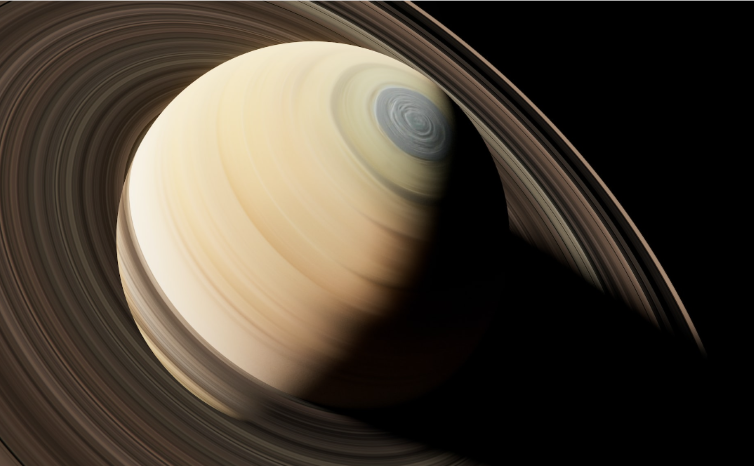Saturn’s rings are dying

Saturn’s rings are eye candy for keen sky observers. They were first noticed by Galileo in 1610, but he did not know what he was seeing at that time. He had a small telescope with modest magnification, and it seemed to him that Saturn was a planet composed of three parts.
Only Christian Huygens, with a much better telescope and with a magnification of 50 times, and that was in 1655, concluded that the planet is surrounded by a ring.
And Giovanni Cassini noticed in 1675 that the ring is a complex creation and that it consists of several smaller rings. Since then, since those early observations, these rings have captivated with their appearance, and have provided scientists with interesting material to study.
Today, we can see many details in that fine, filigree ring structure, which is breathtakingly beautiful. In terms of beauty, they are nature’s ultimate work of art.

But Saturn’s rings are eroding and disappearing. The water ice in them slowly falls into the planet’s atmosphere in the form of rain. Scientists are trying to estimate the rate of this rain. Using the technique of new models, they estimated that the rings lose their material between 400 and almost 3,000 kilograms – per second.
However, the mass of the rings is huge for our everyday concept. According to calculations, the rings will completely evaporate in 300 million years. But not everything with the rings is so simple and there are other estimates, which say that the rings will heal much earlier, in just 100 million years.
Since the beginning of this decade, astronomers have been using data from the Keck Observatory located in Hawaii to study the rings. At Saturn, they paid attention to the light emitted by an unusual type of molecule composed of three hydrogen atoms.
These molecules are created in several ways. One by one, they arise due to the great acceleration that electrons receive under the influence of the planet’s magnetic field, which finally leads to the formation of trihydrogen.
On the other hand, ultraviolet radiation from the Sun breaks down hydrogen molecules, which are then recombined also into trihydrogen molecules. Now, water falling from Saturn’s rings affects the amount of trihydrogen in the planet’s atmosphere. By measuring the light coming from trihydrogen, scientists can measure the rate of water falling onto the planet.
Everything about Saturn’s rings is very complicated, but it boils down to this. The rings are made mostly of ice particles, of frozen water. This material is constantly hit by meteoroids from space, destroying them and thus creating a vapor cloud. This vapor is ionized, i.e. it has an electric charge and is under the influence of Saturn’s magnetic field.
What is new is that the ring particles flow not only directly from the rings but also along the magnetic field lines. If this effect is also taken into account, then it turns out that the rings will disappear even before the next 100 million years have passed.
There are factors that speed up and factors that slow down the process of shedding Saturn’s rings. It is true that the rings slowly melt and turn into rain that falls on the planet, but on the other hand there are additional sources of material in the rings. We might have to wait another 100 milion years to see what happens…

